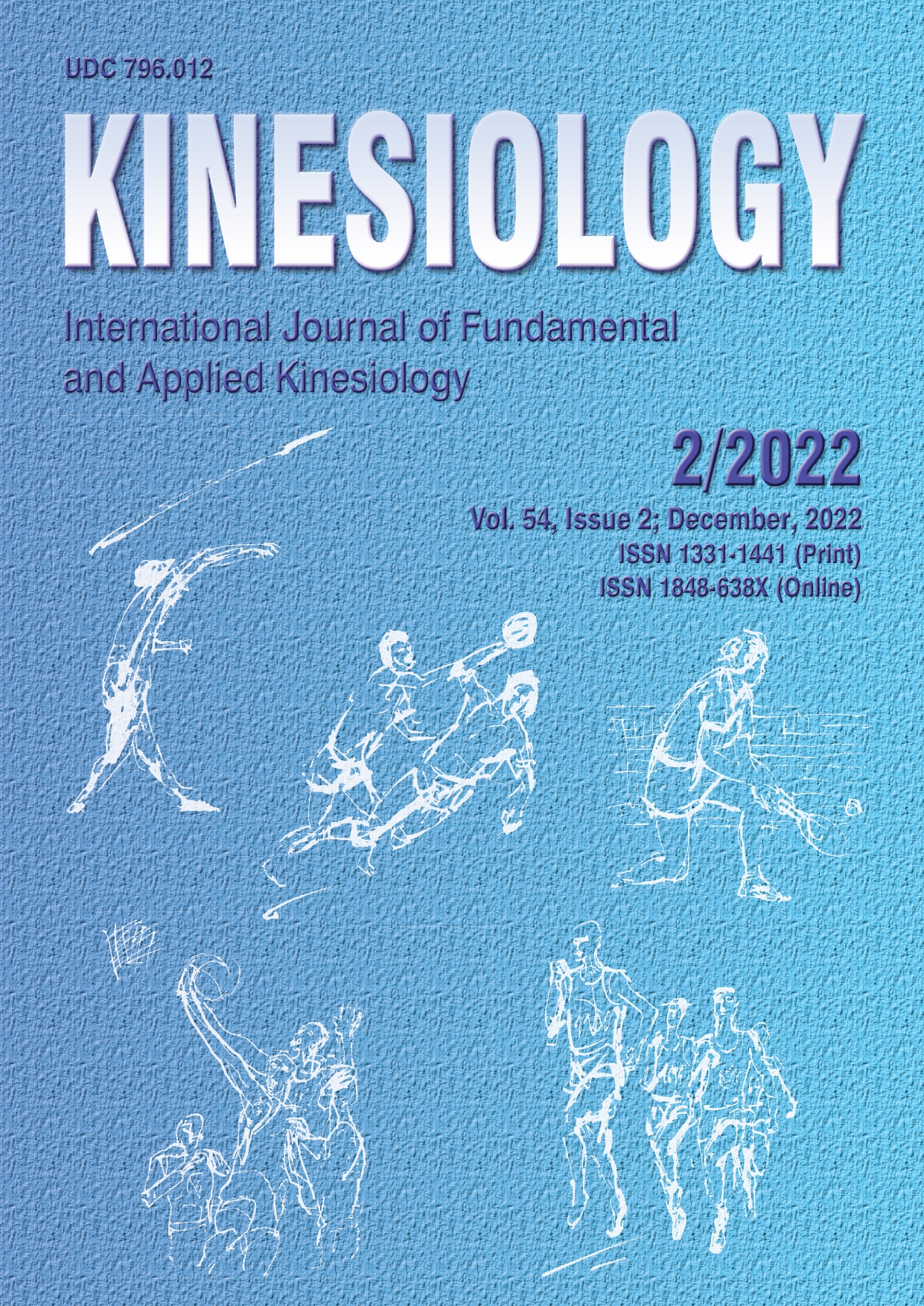ACUTE EFFECTS OF A TYPICAL RHYTHMIC GYMNASTIC TRAINING DAY ON PHYSIOLOGICAL PARAMETERS IN OLYMPIC ATHLETES
Abstract
The aim of this study was to evaluate the effects of a day with two separate training sessions (morning and afternoon) of rhythmic gymnastics on erythrocytes, leukocytes, muscle damage, oxidative stress, and hydration of Brazilian team [age 17.7 (±1.1) years; body height 165 (±0.5) cm; body mass 49.7 (±4.2) kg]. Heart rate and session-ratings of perceived exertion were used to monitor training intensity. Blood samples were collected immediately before (M1) and after (M2) the training day for analyzing erythrocytes, leukocytes, plasma creatine kinase activity, lactate dehydrogenase, alanine aminotransferase, aspartate aminotransferase, ferric reducing ability plasma, thyroid-stimulating hormone, and free T4. Saliva was collected for cortisol analysis. After 24 hours rest (M3), blood collection was performed to analyze creatine kinase and lactate dehydrogenase. The moderate-intensity training day induced significant elevations of total leukocytes (5,163.3 to 9,617.8), lymphocytes (1,752.7 to 2,729.7), neutrophils (2,873.9 to 6,163.6), monocytes (255.7 to 519.1), platelets (280,000.0 to 300,666.7), aspartate aminotransferase (13.1 to 25.6), lactate dehydrogenase (102.5 to 249.1), thyroid-stimulating hormone (1.0 to 3.2), and ferric reducing ability plasma (136.8 to 165.4), as well as significant reductions in red cells (4,691,111.1 to 4,497,777.8), hematocrit (42.1 to 39.3), and hemoglobin (12.9 to 12.5) at M2. There were also significant increases in creatine kinase (144.2 to 519.3) and lactate dehydrogenase (102.5 to 538.2) at M3. The average dehydration rate was 1.3%. A moderate-intensity day of training in rhythmic gymnastics of 8h21min duration caused hemolysis, leukocytosis, muscle damage, redox status perturbations, and insufficient hydration status. These findings show that athletes are exposed to physiological vulnerabilities that can possibly harm their performance and health.
Key words: erythrocytes, sports, creatine kinase, metabolic response, leukocytes
Downloads
Published
How to Cite
Issue
Section
License

This work is licensed under a Creative Commons Attribution-NonCommercial 4.0 International License.
At Faculty of Kinesiology we recognize that access to quality research is vital to the scientific community and beyond. Kinesiology is non-profit journal and all costs of publishing and peer review process are covered by the publisher itself or other funding sources like Ministry of Science and Education of the Republic of Croatia. Full text papers are also available free of charge at http://hrcak.srce.hr/kineziologija. There are no restrictions on self archiving of any form of paper (preprint, postprint and publisher's version).
Articles are distributed under the terms of the CC BY - NC 4.0
Kinesiology does not charge any fees to authors to submit or publish articles in our journal.


